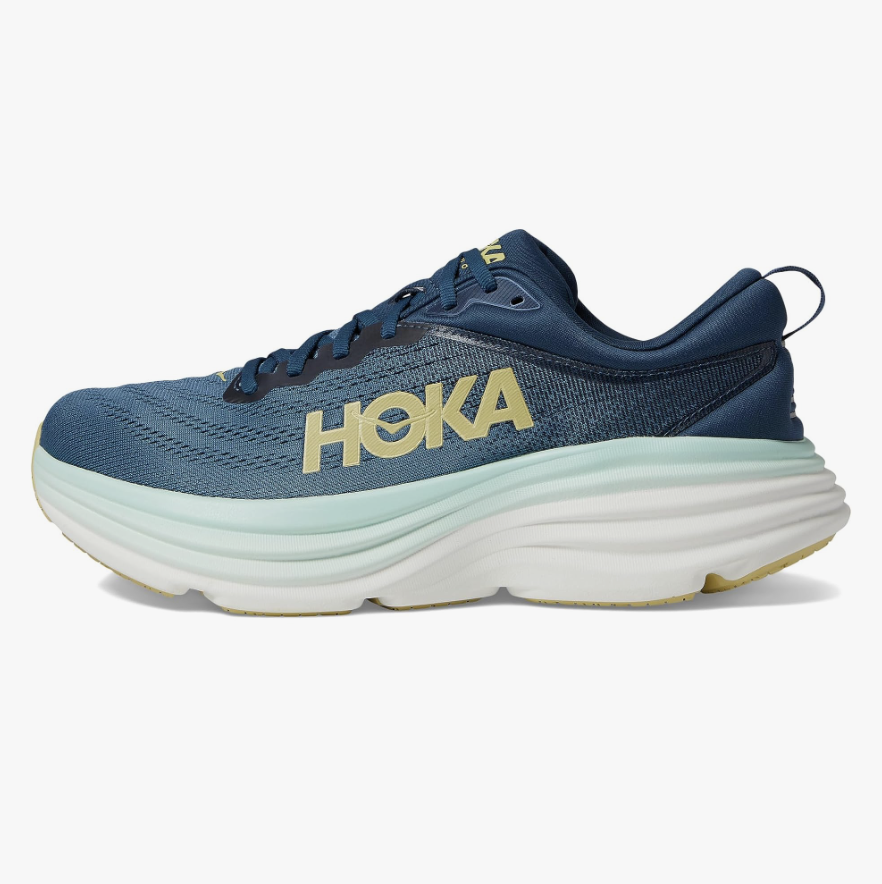
ALL RUNNERS want the best fit when it comes to their footwear, whether they’re serious marathoners logging dozens of miles per week or casual joggers who want to practice a healthy habit. Hoka is one of the most popular running shoe makers on the market, creating kicks that combine comfort and performance in ways that appeal to runners at every level of experience. Just look at two of the brand’s most-loved models, the Bondi and Clifton, which are both excellent options for entry-level runners to serious athletes. But which is best for you? Let’s dive into the pros and cons of each, and discuss who these running shoes are best for.
SHOP HOKA RUNNING SHOES ON ZAPPOS
Our team of fitness editors and contributing writers are running shoe experts who have tested a combined 200+ pairs of running shoes throughout the years, and have been wearing both the Clifton and the Bondi for years (in various iterations). I’m a former NCAA D1 women’s college soccer player who holds a CrossFit L-1, and running is something I’ve enjoyed for years. I usually stick to short distances under seven miles, and have worn both of these Hoka models for running outdoors and on a treadmill.
We also enlisted the help of board-certified podiatrist and foot and ankle surgeons Dr. Brad Schaeffer, who specializes in sports medicine and stars on the popular TLC show My Feet Are Killing, and Dr. Mark Mendeszoon, of Precision Orthopaedic Specialties in Chardon, Ohio, to dive into the more technical aspects of these shoes.


Hoka Clifton vs. Bondi: Cushioning
“Both shoes are considerably cushioned neutral shoes,” Dr. Mendeszoon told Men’s Health. “The Bondi has more stacking through the midfoot and a higher stack, which can explain why its about $20-$25 more expensive than the Clifton.” They both use Hoka’s patented CMEVA foam.
“The Bondi and Clifton are two great examples of how our different compounds and geometries can come to life to provide different underfoot feels,” Rebekah Broe, Hoka’s Director of Product for Performance Footwear, shared with Men’s Health. “Compared to the Clifton, the Bondi has a foam that is the same durometer (hardness), but is a bit more dense which gives it a different, controlled ride. The Clifton’s foam is less dense and more resilient, meaning it will feel significantly lighter and bouncier underfoot,” she explained.
If you’re someone who wants to run at a ‘party pace’ (meaning an easy, feel-good pace) and maintain as much comfort as possible, the Bondi is a great option. However, the additional cushioning makes it a heavier shoe than the Clifton, so it might not be the best pick for a race day shoe.
Read more: Best Long Distance Running Shoes
The Clifton is still a fairly cushioned compared to other popular running shoes on the market, just slightly less so than the uber-plush Bondi. Instead, the Clifton is classified as ‘balanced’, which falls right in the middle of the brand’s cushioning scale. This means that while it still has fair cushioning, considerations were made for pace and weight.
Additionally, the Bondi has a 4 mm heel-to-toe drop, which means the shoe is best for people who strike forefoot or midfoot. This fairly low drop is also good for people who want to take the emphasis off of their knees and hips while they run. The Clifton has a 5 mm heel-to-toe drop, so there’s not much of a difference between the two models on that front.
Hoka Clifton vs. Bondi: Geometries
Both shoes deliver exceptional cushioning, but they do so in distinct ways. The brand’s perspective on the Bondi centers on it being the perfect choice for easy miles and recovery, prioritizing cushioning and stability over weight, according to Broe. “With the Clifton, it’s all about being able to crank out the miles day after day so we want to design for the ideal mix of cushioning and weight,” she